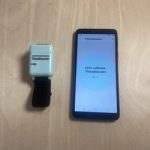
OTT1336
Applications
Pharmaceuticals, physical therapy, rehabilitation
Target Problems
Stroke leaves many survivors with persistent hand impairment, which can have a profoundly negative impact on functional ability, independence, and quality of life.
Therapies to rehabilitate can be time-intensive, painful, arduous, and / or expensive – are often high, limiting the potential for effective rehabilitation results.

Key Benefits
- Functional Design – Aids fingertip touch sensitivity without hindering finger use and functionality.
- Sub-Threshold Vibrations – The vibration applied by the device is not felt by the user.
- Improved Sensation – Increases touch sensation in the hands of users with touch sensory deficit.
Technology
The TheraBracelet technology is a clinically proven, patented technology designed to address this need and to democratize access to highly effective hand impairment rehabilitation therapy. Via a wristwatch or bracelet, TheraBracelet delivers an imperceptible vibratory stimulation to the patient’s wrist skin, which increases activity in the areas of the brain that control movement of the patient’s hand. Unlike other stimulation devices that require the user to wear finger-caps or gloves or other restrictive orthotics, the TheraBracelet’s vibratory stimulation is applied to the wrist via a low-profile device, thereby minimizing interference with hand motion and allowing it to be worn while the patient practices hand tasks. Additionally, because it is easy to use, unobtrusive, and safe, TheraBracelet has the potential to be worn all day, allowing the possibility of home use in conjunction with standard rehabilitation therapy.
